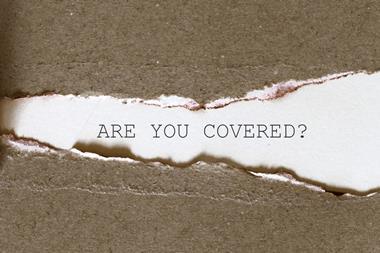CFC’s Chris Comerford tells Insurance Times why he believes this judgment might open the doors to vicarious liability claims becoming commonplace as the CQC cracks down on insurance checks
There could be major implications for brokers and insurers following April’s landmark county court judgment in Breakingbury v Croad, which ruled that dental practice owners now need to be insured for vicarious liability claims.
CFC Underwriting’s medical malpractice underwriter Chris Comerford believes the main implication of the ruling will be that it could give rise to vicarious liability claims becoming more common - particularly because most patients book their dental appointments with the practice itself and not the individual dentist.

Speaking exclusively to Insurance Times on how brokers can help their clients following the judgment, Comerford said: “Drawing their clients’ attention to high profile cases like this will go a long way to making them aware that purchasing coverage is being cautious and the right thing to do for them.
“It is something that we have been trying to highlight for quite a while as the concept of just relying on the indemnity of individuals is not strong enough. The whole concept of insurance is about spreading the risk and managing that financially.”
Comerford is urging dental practices to look more closely at medical malpractice (medmal) insurance because the Care Quality Commission (CQC), which regulates dental practices, conducts routine inspections for this type of insurance.
Medmal insurance provides cover for allegations made against the dentist, or dental practice owner in this instance, for injury that is caused from clinical or healthcare activities.
Comerford continued: “This demonstrates that there is a need for practices to buy medmal insurance to cover any claims where they are the named respondent - that will start to happen more and more as law firms get their hands into these types of cases.
”As it is with any line of insurance - be it [public liability] or [employers’ liability] - it is about protecting your risks, your exposures and managing your balance sheet.”
CFC has been working with brokers to educate them on medmal insurance and the associated risks for dentists.
Vicariously liable
In Breakingbury v Croad, held at Cardiff County Court, a former dental practice owner and dentist called John Croad was held “vicariously liable” for negligence more than two decades after his retirement.
The allegation of negligent treatment by Lynda Breakingbury was against two of Croad’s associate dentists, who worked at his practice between 2008 and 2012 before he sold it.
Breakingbury claimed that she had experienced numerous issues with her teeth over the years, including an incident in 2011 where she was allegedly hopsitalised for six days due to complications arising out of an extraction.
The judge ruled that “a non-delegable duty of care” existed between the practice and the patient for vicarious liability. According to the judgment, this refers to a duty which “cannot be discharged by entrusting its performance to another agent if that agent is apparently a competent contractor”.
This is not the first case where the owner of a practice has been held liable for the negligence of their associates. Other examples include Ramdhean v Agedo and the Forum Dental Practice, where the judgment was published last year in January, and 2014’s Whetstone v Medical Protection Society.
Comerford continued: “For practices that do not have insurance, they may find themselves having to foot their own costs as just buying a surgery package is not going to be wide enough in cover.”
Indemnity issues
Alongside the judgment, the Covid-19 pandemic has also impacted on dental practices - these businesses were among those required to temporarily shut down in alignment with the government’s social distancing measures.
Comerford said this has affected how many patients dental practices can see, as well as having to routinely clean premises to avoid coronavirus transmissions.

“This is not something that will help in terms of the difficulty in getting indemnity,” he said.
”The issue was some dentists were trying to find indemnity providers that would allow them to continue practicing despite public guidance. If less patients come through the door, the dental practice earns less.”
A dip in earnings could have an impact on the practice should a claim arise that is particularly large.
Comerford stressed, therefore, that medmal insurance is suitable here because individuals would struggle to foot the bill for exceptionally large claims.
“I suspect we will see a frequency of claims whereby both the dentists and the dental practice are named respondents, because claimants now know that practices are liable for the actions of the individual,” he warned.
”To maximise the prospects of obtaining the damages for the injured party, naming both respondents in the claim should have that effect.
“What will happen is the insurer of the dentist and the insurer of the practice will then negotiate between them as to who is going to contribute what. But not all cases end up in court.”
Comerford hopes that more dental practices are risk adverse following the Breakingbury v Croad case, as it is likely that future similar claims might be pursued by law firms. Therefore, adequate precautions are needed to stop practices and individuals going under.













































No comments yet